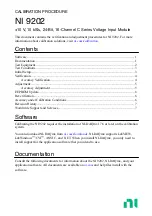
WAGO-I/O-SYSTEM 750
Device Description
13
750-1423 4DI 24V DC 2.0ms, low-side switching, 3-conductor
Manual
Version 1.2.0
3
Device Description
The digital input module 750-1423 (4DI 24V DC 2.0ms, low-side switching, 3-
conductor) receives control signals from digital field (e.g. of sensors, transmitters,
switches or proximity switches).
The I/O module has 4 input channels, providing a direct connection to 3-wire
sensors.
The sensors are connected to the Push-in CAGE CLAMP
®
connectors
DI 1, 24 V and 0 V ... DI 4, 24 V and 0 V.
The assignment of the connections is described in the “Connectors” section.
Each input channel has a RC noise rejection filter with a time constant of 0.2 ms.
The I/O module inputs provide low-side switching. If the 0 V potential for field
power is switched to an input connection, the signal status for the corresponding
input channel is set to “high.”
A green LED indicates the switched status of each channel.
The meaning of the LEDs is described in the “Display Elements” section.
The I/O module 750-1423 (4DI 24V DC 2.0ms, low-side switching, 3-conductor)
receives the 24 V voltage supply for the field level from an upstream I/O module
or from the fieldbus coupler/controller via blade-formed power jumper contacts. It
then provides these potentials to subsequent I/O modules via spring-formed power
jumper contacts.
Do not exceed maximum current via power jumper contacts!
The maximum current to flow through the power jumper contacts is 10 A.
Greater currents can damage the contacts.
When configuring your system, ensure that this current is not exceeded. If
exceeded, insert an additional supply module.
Use supply modules for ground (earth)!
The I/O module has no power jumper contacts for receiving and transmitting the
earth potential. Use a supply module when an earth potential is needed for the
subsequent I/O modules.
The field voltage and the system voltage are electrically isolated from each other.
With consideration of the power jumper contacts, the individual modules can be
arranged in any combination when configuring the fieldbus node. An arrangement
in groups within the group of potentials is not necessary.














































